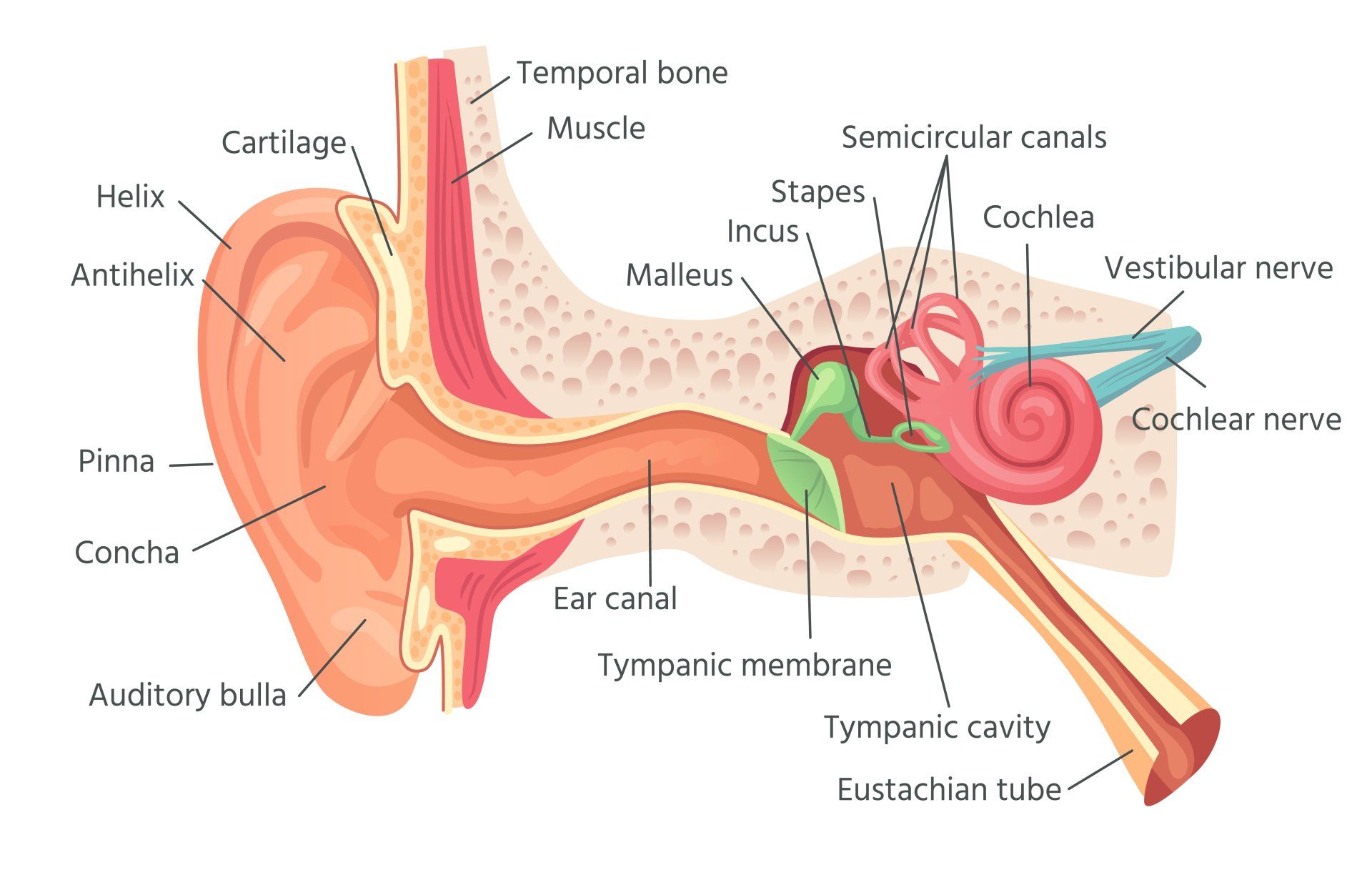Allergies and the Ear
The Ins and Outs of Ears and Allergies
When people think of allergy problems, what comes to mind most often are the classic symptoms of sneezing, runny nose, and itchy eyes. Many people don’t realize that the ears can be affected by allergies, too.
The ear can be divided into three sections: outer, middle and inner.
The outer ear is made up of the ear we see, called the pinna, and the ear canal. The pinna and canal help catch and funnel sound vibrations toward the middle ear. The middle ear begins with the eardrum or tympanic membrane and contains the auditory bones-hammer, anvil, and stapes(STAY-peas)- which transmit sound vibrations to the inner ear or cochlea (COKE-lee-uh). The cochlea converts those vibrations into nerve impulses which can be interpreted by the brain as sound. The cochlea also contains the body’s balance apparatus- the vestibular (ves-TIB-you-luhr) system.





